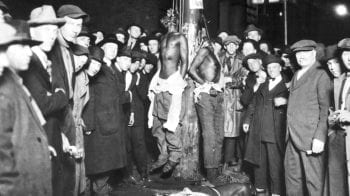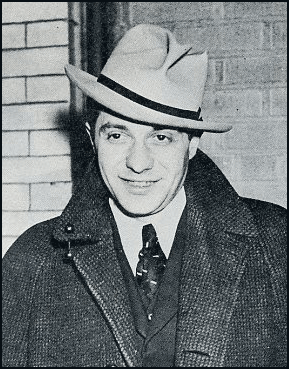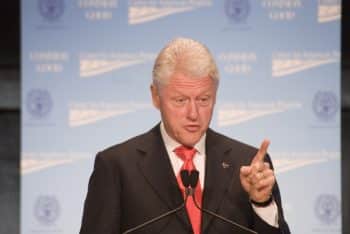The Odd Evolution of the Democratic Party
By Caleb T. Maupin
Arecently produced clip from the UK-based journalist Michael Rotenshtern shows the Democratic Party from an international perspective. The clip misses a few details that are worth noting. Let’s review the history of the twists and turns of this strange political organization.
The Democratic Party is the oldest political party in the United States, and it is also the most corrupt. While the political character of the Democratic Party has evolved and shifted over the years, one key part of its base has not: urban political machines.
A Party of Urban Political Machines
From the Tammany Hall Machine of New York City, the Daley Machine of Chicago, the Rizzo Machine of Philadelphia, to the west coast weirdness that runs the party in San Francisco and Los Angeles, the Democrats have always been recognized for their shady backroom deals and two-faced podium pounding.
The Republican Party is much newer, and originated in the 1850s as a radical left-wing anti-slavery coalition made up of abolitionists, labor unionists, small farmers and northern industrialists. Marx endorsed the Republicans in the 1864 election and even wrote for the Republican Party-aligned newspaper, the New York Tribune. Of course, now the Republicans are the right-wing party and Democrats occupy the position mislabeled as “left,” but some consistency can be found.
Republicans remain the party of rural folks, less populated states, true believers and fanatics. Throughout US history, promises from members of the GOP, however reprehensible and or unpopular, have far more often been kept than those of the rival party.
After the Civil War, when the Republicans seemed to be betraying the progressivism and social justice spirit that defeated slavery, The People’s Party broke ranks. This was a party of small farmers who called for nationalization of railroads, a silver standard, and fair distribution of land. The Populists were at first anti-racist, seeing racism as a tool of the big plantation owners and bankers to divide working people, dubbed “the producers.” As Republicans became a mainstream imperialist party, the Populists emerged as the main progressive rallying point against Wall Street and big capital.
From the KKK to Roosevelt
 However, racism gradually crept into the populist movement, until William Jennings Bryan brought the populists into the Democratic Party. With racism as their main argument, former populists were rallied to vote against the Republican Party of Lincoln, and Democrats became the party of Jim Crow and lynching.
However, racism gradually crept into the populist movement, until William Jennings Bryan brought the populists into the Democratic Party. With racism as their main argument, former populists were rallied to vote against the Republican Party of Lincoln, and Democrats became the party of Jim Crow and lynching.
President Woodrow Wilson, a proto-fascist figure, pushed things even further. Wilson screened the racist propaganda film “The Birth of a Nation” at the White House, and his party oversaw a revival of the Ku Klux Klan. The second incarnation of the KKK was clearly aligned with the Democrats, and it functioned as a mechanism for bringing small farmers and social conservatives into the party they had previously shunned because it had been associated with Roman Catholics and urban immigrants.

At the height of its popularity, the Ku Klux Klan brought more than 30,000 of its members to participate in a parade in D.C. on Aug. 8, 1925
The KKK battled for control of the Democratic Party throughout the 1920s, fighting the urban machines and pushing anti-Catholic bigotry. Huey Long emerged in Louisiana by aligning with Catholic Democrats against the Klan in local politics. The loss of Al Smith in the 1928 Presidential election had a lot to do with the KKK’s anti-Catholic message, sewing disunity among Democratic voters.

A now forgotten champion of the left, Vito Marcantonio fought important battles that often alienated many of his coreligionists in the Democrat party.
Roosevelt’s emergence in the 1930s as a progressive and ally of organized labor was a big game changer, and the Democratic Party apparatus did not take it lightly. Many prominent Democrats, such as Al Smith formed the American Liberty League, a group that accused Roosevelt of being a Communist traitor. Eleanor Roosevelt’s anti-racist statements angered the “Solid South” of Jim Crow politicians, and the Communist Party’s allies in Congress like Vito Marcantonio constantly pushed an Anti-Lynching Bill which was voted down over and over.
Purging & Redefining ‘The Left’
Harry Truman replaced progressive leftist Henry Wallace as Vice President, and ended up taking office after Roosevelt died. Truman had briefly been a KKK member himself, and was tied to a rather corrupt political machine in St. Louis. He dropped atomic bombs on Japan and then proceeded to purge the Roosevelt coalition from his own party.
The House Un-American Activities Committee, originally formed as the “Dies Committee” to investigate Roosevelt during the 1930s, was used to purge the Democratic Party for the Cold War. The urban machines, the Catholic Trade Union federations, and the old guard worked to purge those who wanted peace with the USSR, Civil Rights for African Americans or other policies associated with Communism.
Soon Democrats were on the defensive though, as Republicans accused Truman of “losing China.” As McCarthyism escalated and then wound down, Democrats became the party of Cold War liberalism. But, in order to prove the Communists wrong, the USA needed to become more free and open, and start roll back some of the authoritarianism and racism that gave the country a bad name.
The ultimate chameleons—and con artists—the Democrats continue to adapt to new political realities they themselves manufacture. That is what some would duly call "double fraudulence".—Ed.
In 1948, Strom Thurmond had broken with the Democrats to form the National States Rights Party, seeing that outside of the South the party leadership was moving against segregation. By the time John F. Kennedy was elected, a number of southerners had already shifted into the Republican camp. Lyndon Johnson, who had once been nicknamed “Lynching” Baines Johnson for his racism, signed the Civil Rights Act and Voting Rights Act. In 1968, a number of southern Democrats campaigned for racist demagogue George Wallace, disgusted by the anti-racist turn the party had taken.
Starting in 1968, Republicans began to appeal to a kind of patriotic right-wing know-nothing-ism. Slogans like “my country right or wrong” and “love it or leave it” voiced suburban and middle-American disapproval of protesters and fears of urban rioting. While the Democrats were out of power during the Nixon and Ford presidency, behind the scenes the party was changing. The days of populism and Roosevelt style labor progressivism were over. The “new” left meant a new worldview.
Jimmy Carter took office in 1976 with a cabinet almost entirely made up of individuals tied to a Rockefeller think-tank called the Trilateral Commission, led by Zbigniew Brzezinski and Henry Kissinger. The Carter administration published The Global 2000 Report, warning of an ecological apocalypse by the end of the 20th century unless the human population was reduced. Carter sponsored a national women’s conference, giving support to feminism, and even met with LGBT activists despite stating his opposition to gay marriage.
Meanwhile, Carter sent his Department of Justice and FBI to go after the members of his party who were too close to organized labor and did not accept the “slow growth” worldview of his Trilateral allies. ABSCAM involved an FBI sting operation, framing members of Congress for taking bribes and sending them to prison. The target was “smokestack Democrats” who supported Nuclear power and worked with labor unions. Carter wasn’t interested in economic populism. His “leftism” was of a new, "woke" variety that was far more pessimistic.
During the economic downturn of 1978, Carter gave his “Crisis of Confidence” speech, telling Americans that owning things would not bring them happiness. As the cost of heating gas soared, Carter made a show of wearing a cardigan sweater instead of turning up the heat. Carter unleashed Paul Volcker to implement widespread economic deregulation, and overturn state usury laws. Big bankers got more freedom than ever, as the US economy screamed, unemployment increased, and the President gave lectures on frugality.
The modern Democratic leadership of San Francisco has more than a few skeletons in its closet, one of which is Rev. Jim Jones and his mass suicide in Guyana. The bizarre cult led by a man who claimed to be the combined reincarnation of both Jesus and Lenin had been key in getting Mayor George Mason and Alderman Harvey Milk, the first openly gay elected official, elected in San Francisco. In the direct aftermath of the 1978 mass suicide in Guyana, Milk and Moscone were assassinated by a former police officer, and Dianne Feinstein was sworn in as a Mayor. Feinstein soon helped to bring in Nancy Pelosi and a whole machine that was far more conservative than Moscone and Milk took hold in California politics.
Ronald Reagan’s “revolution” involved a kind of rebellion from the military-industrial complex and members of the business community who weren’t in with the Trilateral ultra-rich clique. Reagan continued Carter’s foreign policy in Nicaragua and Afghanistan, but added a much more offensive cowboy tone. Democrats were happy to march with labor unions against Reagan after he used his authority to break the Air Traffic Controllers Strike, but once Democrats were back in power under Clinton, not much changed.

Bill Clinton: Criminal like the rest of the Democrat leadership, Clinton remains one of the phoniest politicians in modern history.
As if Carter hadn’t taken the Democrats further enough away from working people, Bill Clinton’s Democratic Leadership Council embraced full-on economic neoliberalism. Clinton ended “welfare as we know it” putting millions of working mothers into desperate circumstances and betrayed the labor unions who voted for him signing the North American Free Trade Agreement (NAFTA). Clinton made a point of embracing the rapidly expanding prison industrial complex during his campaign, condemning Black rap artist Sista Solja in a campaign speech, and being photographed with a prison chain gang. Clinton even suspended his campaign in order to return to Arkansas to oversee the execution of Black man. The notion that some African-American youth were “super-predators” was used to terrify white voters into supporting such policies. Biden joined the rallying cry to “get tough on crime” with more prisons and longer sentences.
After the Teamsters Union successfully organized UPS workers, Clinton sent the federal government to investigate and remove Ron Carey from Teamster leadership, once again showing the Democrats to be a false friend of labor. This did not stop the union bosses from spending lots of money to get the Democrats elected, despite Democrats betraying them over and over.
Clinton also developed the propaganda strategy of “humanitarian interventionism” to sell imperialist war. He attacked former Yugoslavia on the basis of human rights allegations, many of which were later debunked. Clinton’s White House imposed sanctions on Iraq that killed over 500,000 Iraqi children, preventing the country from getting medicine and chlorine to treat its water. Madeline Albright famously said she felt these deaths were “worth the cost.”
When George W. Bush was President, his policies of political repression, wars based on lies, fear-mongering, torture and economic austerity were certainly unpopular. However, the Democrats could never be quite clear on what they objected to. In Europe, among the protesters in the streets, and the US public itself, opposition to Bush was based on anti-war, progressive, civil libertarian and economically left-wing sentiments. Among Democrats, who largely voted for his war, and did not really oppose many of the unpopular policies, it was quite unclear what [their] opposition was based on.
John Kerry accepted the Democratic Nomination in 2004 saying: “I’m John Kerry, reporting for Duty.” While millions voted for and campaigned for Kerry on the basis of opposing the war, and Kerry himself had been an anti-war activist once he returned from Vietnam, the 2004 Democratic Party campaign focused on Kerry as a war hero. Kerry was celebrated because he won medals for shooting teenagers who were trying to defend their homeland from foreign occupiers while he patrolled on a “swift boat” in Vietnam.
Democrats accused Bush of not being Islamophobic enough and signing a deal with companies based in Bahrain to operate in US ports. Democrats also argued that airport security measures were not strict enough. Kerry’s 2004 platform called for sending more troops to Iraq, and on the campaign trail, Kerry invoked the “Pottery Barn Rule,” “you break it, you buy it”… which he mistakenly quoted as “you break it, you fix it.”
The Woke Makeover of Empire
Obama’s Presidency in 2008 came as the US establishment seemed frustrated by the failures of the Neocon coalition. The NATO countries were alienated as was the Muslim world. Obama walked into office promising “hope and change” amid the financial crisis. Obama had bragged about being one of the few Democrats to vote against Bush’s invasion of Iraq, but as President he expanded US military presence to Libya and Syria. Obama failed to close Guantanamo Bay, but worked hard to manipulate the Arab spring and continued the drone strike program.
In the era of Trump, the Democratic Party is increasingly becoming the party of the mainstream. Supporters of Bush are welcomed in with open arms, so long as they will denounce Trump and his dangerous “populism.” The USA seems to be getting a “woke makeover” cultivating the image that it is a center of social liberalism, racial justice, and sexual freedom. Opponents of the United States are deemed justifiable targets because their populations and governments are not sufficiently “woke.”
Democrats increasingly attempt to link right-wing Americans and conservatives with anti-imperialist and socialist states. Biden’s first speech to a joint session of Congress referring to various leaders as “autocrats” and then linked them to the January 6th events, referring to the USA as “overcoming insurrection and autocracy.” Biden made an odd comment when asked about the 2024 election, “I have no idea if there will be a Republican Party. Do you?”
Biden may be right. Republicans are increasingly confused and they represent older voters. The economic power of the United States tends to be concentrated in the coastal, Democratic Party-controlled areas. Republicans are licking their wounds from January 6th, completely confused about what they stand for as a party.
But, when looking over their long history of twists and turns, what do the Democrats really stand for? It appears the Democratic Party is on the road to becoming the new ruling party of 21st Century America. Silicon Valley is with them. Academia is with them. Younger voters are with them. Mainstream media is with them.
But what does that mean for the future? Much like back in 1800s, we can be sure that what we are told it might mean, and the promises made to us, will certainly be different than the results we get.
 Caleb Maupin is a widely acclaimed speaker, writer, journalist, and political analyst. He has traveled extensively in the Middle East and in Latin America. He was involved with the Occupy Wall Street movement from its early planning stages, and has been involved in many struggles for social justice. Among other platforms, he still maintains a YouTube channel here.
Caleb Maupin is a widely acclaimed speaker, writer, journalist, and political analyst. He has traveled extensively in the Middle East and in Latin America. He was involved with the Occupy Wall Street movement from its early planning stages, and has been involved in many struggles for social justice. Among other platforms, he still maintains a YouTube channel here. All image captions, pull quotes, appendices, etc. by the editors not the authors.
YOU ARE FREE TO REPRODUCE THIS ARTICLE PROVIDED YOU GIVE PROPER CREDIT TO THE GREANVILLE POST
VIA A BACK LIVE LINK.
![]() This work is licensed under a Creative Commons Attribution-NonCommercial 4.0 International License
This work is licensed under a Creative Commons Attribution-NonCommercial 4.0 International License
[premium_newsticker id="211406"]
Don't forget to sign up for our FREE bulletin. Get The Greanville Post in your mailbox every few days.


